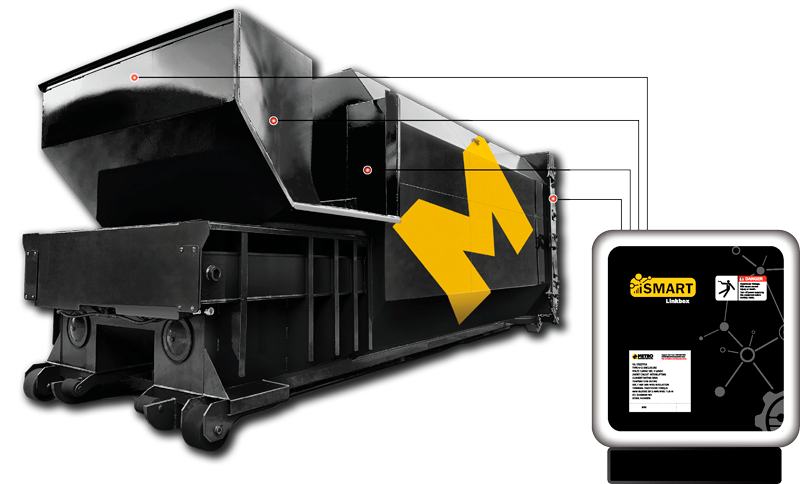Waste Baler Rental Providers for Sustainable Waste Administration
Waste Baler Rental Providers for Sustainable Waste Administration
Blog Article
Checking Out the Essential Role of Waste Tools in Modern Recycling Processes and Sustainable Garbage Disposal Practices
The crucial duty of waste devices in modern recycling procedures emphasizes its value in accomplishing sustainable garbage disposal techniques. Advanced systems, such as automated arranging innovations and compactors, not just improve efficiency but additionally play an essential function in decreasing contamination rates and enhancing material recovery. As the demand for more sustainable remedies grows, it is necessary to take a look at just how these modern technologies adjust to progressing difficulties within waste monitoring. What innovative improvements are on the perspective that could better change these processes?
Significance of Waste Equipment
Why is waste tools important in the reusing procedure? The efficiency of reusing procedures pivots considerably on the accessibility and capability of waste equipment. This group of machinery and tools is important for the reliable collection, handling, and sorting of recyclable products. By assisting in the splitting up of products, waste devices decreases contamination, which is paramount in making sure premium recyclables that can be reintroduced into manufacturing cycles.
Furthermore, waste devices enhances operational efficiency and safety within reusing centers. Advanced equipment, such as shredders and balers, enables the quick handling of large volumes of waste, minimizing labor prices and handling time. Additionally, the use of specific devices lowers the threat of injury amongst employees by automating unsafe tasks.
Moreover, the ecological influence of recycling is enhanced by efficient waste equipment. By enhancing the reusing process, facilities can significantly lower the volume of waste sent out to garbage dumps, thus contributing to sustainability initiatives. In verdict, waste devices is not merely a secondary element of recycling; it is an essential element that drives effectiveness, safety and security, and ecological stewardship in modern-day waste administration methods.
Kinds Of Waste Devices
The effectiveness of reusing operations is closely linked to the specific types of waste tools made use of while doing so. baler rental. Different classifications of tools are indispensable to the collection, sorting, processing, and transport of recyclable materials
To start with, collection equipment, such as waste collection vehicles and containers, is essential for collecting recyclables from various sources, including residential, business, and industrial areas. Once accumulated, arranging equipment, consisting of conveyor belts, shredders, and magnetic separators, plays an important duty in identifying various product types, ensuring that impurities are gotten rid of prior to processing.
Handling tools, such as balers and compactors, further prepares products for reusing by compressing and packaging them right into manageable dimensions. This not just enhances space however also improves transportation performance. In addition, specialized equipment like granulators and extruders is utilized for transforming materials into recyclable kinds, especially in plastic recycling.

Function in Recycling Processes
In reusing procedures, the role of waste equipment is essential in making certain effectiveness and efficiency at every phase. This equipment encompasses a variety of machinery created to take care of, procedure, and type materials that are to be recycled. The first stage includes collection and transport, where compactors and balers play a crucial duty in maximizing the volume of products for transit, thus reducing operational costs.
When at the reusing center, shredders and crushers come right into play, damaging down materials right into workable sizes appropriate for more processing. These devices add to improving the area of recyclables, promoting more effective material healing. Arranging systems, equipped with sophisticated modern technologies such as conveyor belts and optical sensors, make sure that products are properly divided by type, thereby maximizing the top quality of the recycled end product.
Additionally, specialized tools for handling specific materials-- such as glass, plastics, and steels-- ensures that each kind is dealt with in one of the most effective fashion. Overall, the integration of sophisticated waste tools into the reusing procedure not only enhances operations yet additionally considerably adds to the general recovery rates of beneficial materials, underscoring its necessary function in contemporary reusing initiatives.
Influence on Sustainable Practices
Through the reliable procedure of waste tools, reusing processes dramatically enhance lasting practices throughout different industries. This influence is recognized via boosted material healing prices, which decrease the demand for virgin resources. By simplifying sorting and handling features, progressed waste equipment reduces contamination in recyclable products, consequently boosting the high quality of recycled outcome. The decrease of waste sent to garbage dumps is an additional essential advantage, as it minimizes environmental destruction and minimizes greenhouse gas exhausts related to disintegration.

Moreover, the integration of wise technologies in waste management systems enables for real-time information tracking and evaluation, bring about even more informed decision-making and operational effectiveness. As markets progressively focus on sustainability, the duty of waste equipment comes to be vital fit techniques that line up with environmental stewardship and regulatory compliance. Inevitably, the harmony between waste tools and reusing procedures plays a vital function in progressing wider sustainability goals throughout neighborhoods and industries alike.
Future Fads in Waste Management
Emerging patterns in waste management are positioned to improve the landscape of reusing and resource healing dramatically. One of one of the most crucial changes is the combination of innovative innovations such as fabricated intelligence, device learning, and the Internet of Things (IoT) These advancements help with boosted sorting procedures, boosting the effectiveness and accuracy of reusing procedures. Smart waste containers outfitted with sensors can monitor waste degrees in real-time, maximizing collection routes and minimizing operational expenses.
In addition, the round economic climate design is obtaining grip, promoting the idea of recycling materials instead than getting rid of them. This trend urges companies to create items with end-of-life considerations in mind, driving the demand for innovative waste management options.
Additionally, public recognition and interaction her response in sustainability techniques are on the increase, resulting in enhanced engagement in reusing programs. Government plans are also developing, with stricter policies on garbage disposal and incentives for sustainable techniques.
As these patterns assemble, they create a much more efficient, sustainable waste management system that not only reduces environmental impact but also cultivates economic growth via source recovery and innovation in waste tools. The future of waste monitoring looks promising, driven by innovation and a dedication to sustainability.
Final Thought
In conclusion, waste equipment plays a critical role in rent a baler enhancing the performance and performance of modern recycling procedures. As waste administration proceeds to develop, the significance of cutting-edge waste equipment will continue to be paramount in achieving sustainability objectives and attending to the obstacles of source depletion.
Report this page